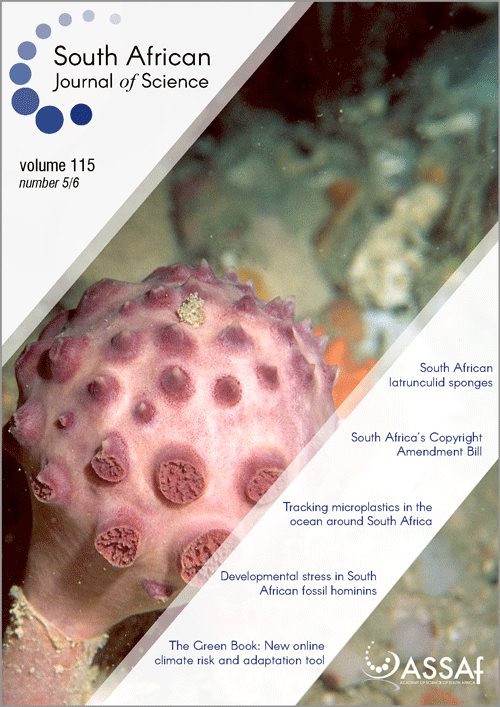A comparison of hominin teeth from Lincoln Cave, Sterkfontein L/63, and the Dinaledi Chamber, South Africa
DOI:
https://doi.org/10.17159/sajs.2019/5739Keywords:
Homo naledi, Homo ergaster, Archaic Homo sapiens, dental morphometrics, Middle PleistoceneAbstract
Prior to the recovery of Homo naledi from the Dinaledi Chamber of the Rising Star Cave system, the Middle Pleistocene fossil record in Africa was particularly sparse. With the large sample size now available from Dinaledi, the opportunity exists to reassess taxonomically ambiguous teeth unearthed at the nearby site of Sterkfontein. Teeth recovered from Lincoln Cave South and area L/63 at Sterkfontein have been considered ‘most probably Homo ergaster’ and ‘perhaps Archaic Homo sapiens’, respectively. Given the similarities shared between Lincoln Cave, area L/63, and the Dinaledi Chamber with regard to climatic/geologic depositional context and age, two teeth from the former sites, StW 592 and StW 585 respectively, were compared with corresponding tooth types of H. naledi from the Dinaledi Chamber. The results of our study indicate that the Lincoln Cave and area L/63 teeth are morphologically inconsistent with the variation recognised in the H. naledi teeth.
Significance:
- The similar age and climatic/geologic depositional and post-depositional circumstances at Lincoln Cave South, area L/63 at Sterkfontein and the Dinaledi Chamber, Rising Star raise the possibility that these fossils might represent the same species.
- The teeth StW 592 and StW 585 are not consistent with the variation evident in the known naledi sample.
- The results of the study do not add to the question of the existence of at least two species of the genus Homo living in close proximity to each other in South Africa at approximately the same time.
Published
Issue
Section
License

All articles are published under a Creative Commons Attribution 4.0 International Licence
Copyright is retained by the authors. Readers are welcome to reproduce, share and adapt the content without permission provided the source is attributed.
Disclaimer: The publisher and editors accept no responsibility for statements made by the authors
How to Cite
- Abstract 1335
- PDF 647
- EPUB 225
- XML 419












.png)